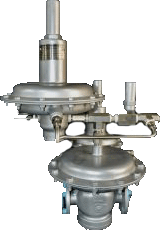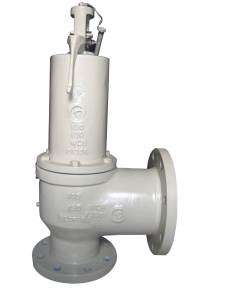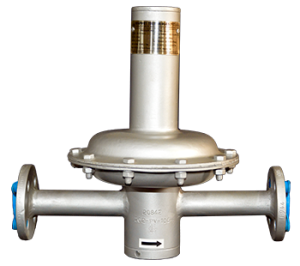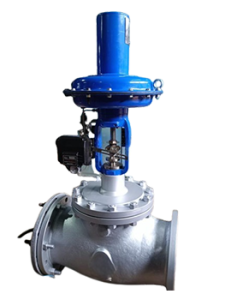In industry, it is essential to have consistent water or fluid pressure to ensure smooth operation. From energizing heavy machinery, cooling equipment, to maintaining consistent flow in processing plants, pressure tanks are the key. Without a proper pressure tank, industries may experience frequent system failures, higher operational expenses, and shorter equipment lifespan. In this article, we’ll explore the significance of pressure tanks in industrial applications, the benefits they provide, and how they contribute to maintaining system stability and efficiency.
What is a Pressure Tank in an Industrial System?
A pressure tank in an industrial setting is a container specifically made to hold liquids (ordinarily water) under pressure, thereby having a stable supply of pressurized fluid on demand. Pressure tanks regulate the pressure in the system, reducing pumping frequency and protecting equipment against pressure overload and damage.
Pressure tanks find their applications in industrial systems in ways such as:
Cooling Systems – To ensure proper temperatures in equipment and avoid overheating.
Boiler Systems – To regulate pressure fluctuations and ensure system stability.
Fire Protection Systems – To provide an instant supply of pressurized water in case of emergencies.
Chemical Processing Plants – To regulate the flow of liquids in intricate processes.
How Do Pressure Tanks Work in Industrial Systems?
Pressure tanks operate based on the process of compressing gas or air in order to support the intended system pressure. This is a summary of their operational process:
Filling the Tank: Upon fluid being forced into the pressure tank, it pushes the air inside and causes a balance of air and fluid with the aim of keeping the pressure desired.
Pressure Regulation: When the system pulls fluid, compressed air forces the liquid stored in the tank out of the tank, creating a constant flow. This avoids the pressure drops that occur suddenly and provides consistent system operation.
Pump Activation and Deactivation When the tank fluid level goes down to a level (cut-in pressure), the pump comes on again to top up the tank. At the required pressure (cut-off pressure), the pump stops, avoiding unnecessary wear and tear.
Why Are Pressure Tanks Important in Industrial Applications?
Industries have high demands on their systems, with high expectations for efficiency and reliability. Here’s why pressure tanks are essential in industrial applications:
✅ 1. Avoids System Overload and Pump Cycling
In industrial applications, pumps tend to process large amounts of fluid. Without a pressure tank, the pump would have to run constantly, leading to constant cycling. Such continuous running not only consumes more energy but also reduces the lifespan of the pump. A pressure tank holds pressurized fluid, lightening the load on the pump and reducing system wear and tear.
At a huge food manufacturing factory, wherein water is required for cleaning and cooling, pressure tank prevents the pump from being activated every time water demand occurs. This ensures no system overloading and keeps equipment life up to the mark.
✅ 2. Ensures Balanced Pressure for the Best Performance
In industrial settings, constant pressure is vital to allow the system to operate smoothly. Pressure variations may contribute to inefficiencies, reduced product quality, and equipment failure. Pressure tank aids in the regulation of pressure so that the system operates within the desired level.
In an automobile production factory, where cooling systems are kept at the most appropriate temperatures for welding machines, a pressure tank guarantees the cooling system’s constant pressure, eliminating machine overheating and expensive downtime.
✅ 3. Enhances System Efficiency and Saves on Energy
Pressure tanks minimize the constant use of the pump, lowering energy consumption. They prevent continuous pump starts and stops, optimizing the system efficiency, and reducing costs in the long run.
Example:
At a textile dyeing plant, where water is utilized for rinsing and washing textiles, a pressure tank stabilizes water pressure and minimizes pump cycling. This reduces energy consumption and operational costs.
✅ 4. Increases Safety and Decreases Risk of Equipment Damage
Pressure fluctuations in industrial systems can cause equipment breakdown and safety hazards. Pressure tanks help to dampen shockwaves and avoid water hammering, safeguarding pipelines, valves, and equipment against damage.
In a fire protection system installed in a large commercial building, a pressure tank provides for the availability of water at the desired pressure to respond promptly to emergencies to prevent system failure during such critical events.
✅ 5. Provides Reliable Backup Supply During Peak Demand
In industries where high water demand is common, a pressure tank acts as a backup storage system. It provides immediate access to pressurized water, ensuring uninterrupted operations even during peak usage.
Example:
In a power plant where cooling towers require large volumes of water, a pressure tank maintains a buffer supply, preventing pressure drops during high demand periods.
Types of Pressure Tanks Used in Industrial Applications
Bladder Tanks: These tanks include a flexible bladder that distinguishes air and water and does not allow waterlogging or pressure instability.
Diaphragm Tanks: Just like bladder tanks, diaphragm tanks contain a flexible diaphragm that distinguishes water from air, providing guaranteed and consistent performance.
Air-Over-Water Tanks: Traditional tanks combine air and water, necessitating regular maintenance to keep pressure in balance.
Signs Your Industrial Pressure Tank Needs Maintenance
To ensure consistent performance, regular maintenance is crucial. Here are some common signs that your pressure tank may require attention:
Frequent Pump Cycling: Indicates a loss of air or compromised pressure control.
Fluctuating Pressure: Suggests potential diaphragm or bladder damage.
Waterlogging: Occurs when the tank loses air, reducing efficiency.
Choosing the Right Pressure Tank for Industrial Use
When selecting a pressure tank for industrial applications, consider the following factors:
Capacity and Size: Make sure the tank has enough capacity to meet peak system loads.
Material and Durability: Use corrosion-resistant materials that can stand the rigors of industrial environments.
Pressure Range: Align the tank pressure settings with the system pressures for maximum performance.
Conclusion
In industrial use, where efficiency, reliability, and safety are of the utmost importance, pressure tanks are crucial to ensuring system stability. Through the avoidance of pump cycling, the provision of constant pressure, and the minimization of operational expenses, these tanks go a long way in ensuring the overall performance of industrial systems. In cooling systems, fire protection systems, or manufacturing processes, the purchase of a high-quality pressure tank guarantees that industrial operations are carried out smoothly, efficiently, and safely.





